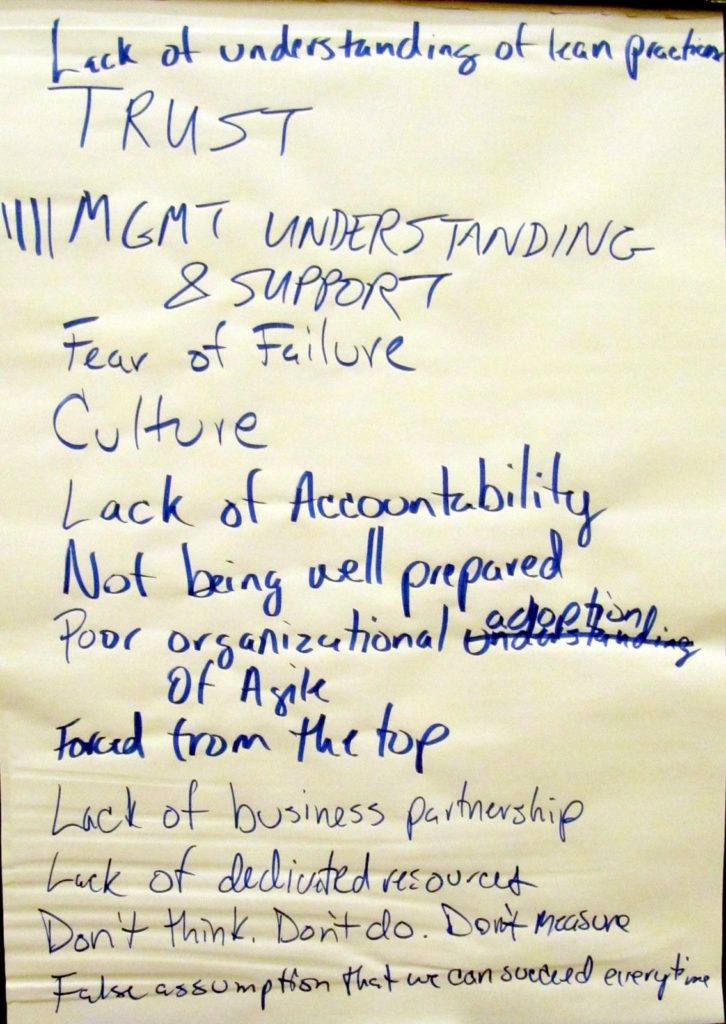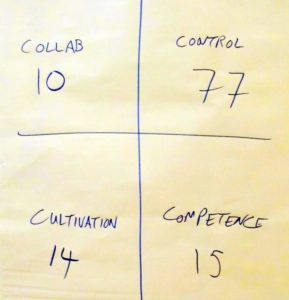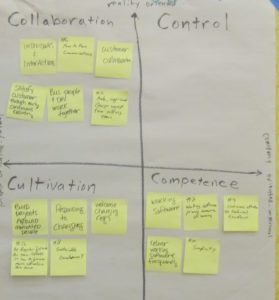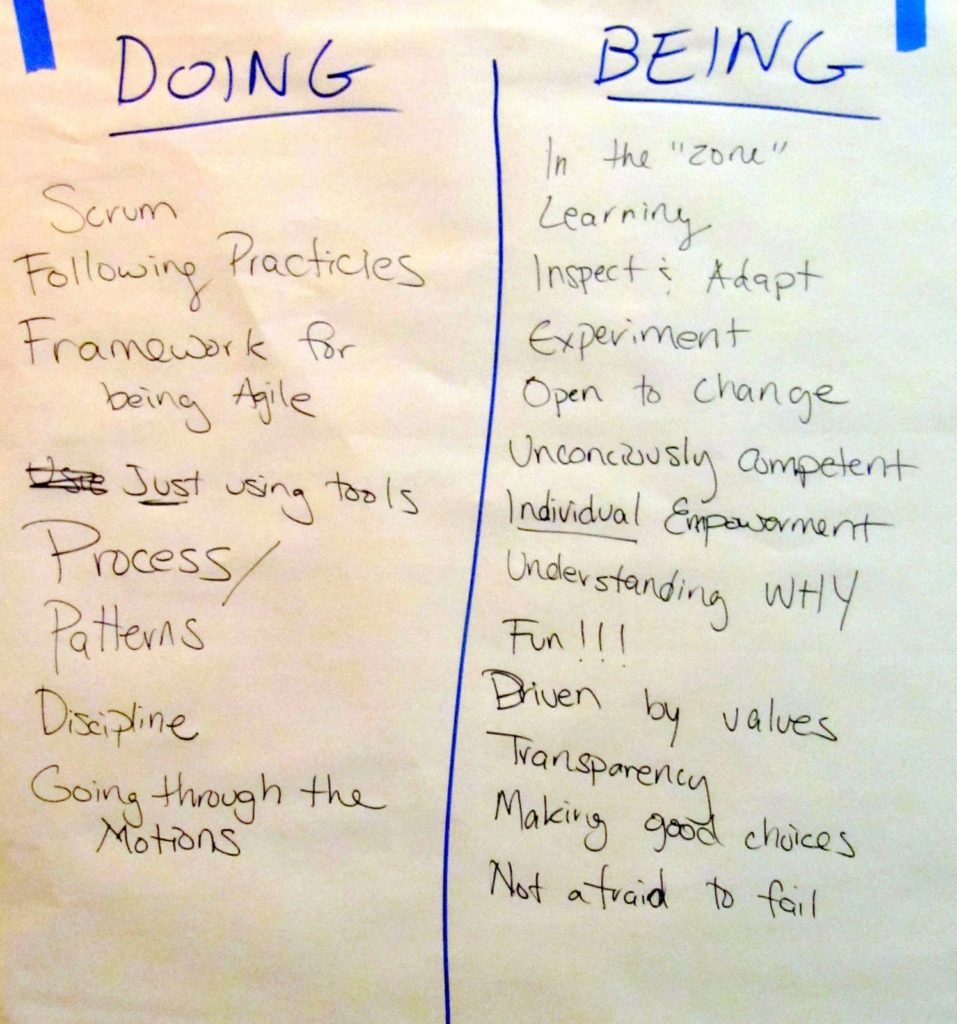What follows are the workshop results from Agile 2012 Session “An Agile Adoption and Transformation Survival Guide”. The results are based on 120 people in the interactive section (there were another 60+ observers I was unable to involve).
Confirmed Insights
- Failure rates are high. Success reports are 2.8 average out of 5.
- Control culture is dominant in the majority of companies.
- Agile culture is primarily about collaboration culture. Cultivation and Competence cultures and are secondary.
- Lot’s of companies are “doing Agile” practices, and not “being Agile” (mindset)

Agile Failure rates are high
As can be seen from the photo on the right, people have reported different levels of success with Agile. 5 means always successful and 0 means never successful. The average of the respondents is 2.8 out of 5. This is a success rate of a little less than 60%. Ouch!
Reasons for Agile Failure
The photo below shows the reasons participants encountered Agile Failure. Notice that the most common item mentioned was management understanding and support. 
Control culture is dominant in the majority of companies
 As we can see here, approximately 77 out of 108 participants indicated that their dominant organizational culture is Control using the Schneider model. This is a little higher than 70%. And this is at an Agile conference!
As we can see here, approximately 77 out of 108 participants indicated that their dominant organizational culture is Control using the Schneider model. This is a little higher than 70%. And this is at an Agile conference!
Agile is about Collaboration culture
 In the workshop, participants were asked to associate Agile values and principles with the cultures of the Schneider culture model. All twelve tables agreed that the dominant culture expressed by Agile is about Collaboration. But what of Agile’s secondary culture? Three groups identified Cultivation culture while nine groups identified Competence culture. On the surface, this would seem to invalidate my claim that Agile is about People (Collaboration and Cultivation). My understanding of this is that on the surface, terms like “working software” are interpreted as signs of Competence culture whereas “working software” is a goal that can be satisfied by any cultural approach. My conclusion is that this exercise needs more time and discussion than I allocated to avoid simply sticking principles into the closest fit culture quadrant. Either way, we can see that there is a big gap between Agile culture and current organizational culture. This is the aha moment that causes people despair. Below are two examples. On the left there is the association with Competence and on the right, a balance of Cultivation and Competence. Click on images to see details of values and principles identified.
In the workshop, participants were asked to associate Agile values and principles with the cultures of the Schneider culture model. All twelve tables agreed that the dominant culture expressed by Agile is about Collaboration. But what of Agile’s secondary culture? Three groups identified Cultivation culture while nine groups identified Competence culture. On the surface, this would seem to invalidate my claim that Agile is about People (Collaboration and Cultivation). My understanding of this is that on the surface, terms like “working software” are interpreted as signs of Competence culture whereas “working software” is a goal that can be satisfied by any cultural approach. My conclusion is that this exercise needs more time and discussion than I allocated to avoid simply sticking principles into the closest fit culture quadrant. Either way, we can see that there is a big gap between Agile culture and current organizational culture. This is the aha moment that causes people despair. Below are two examples. On the left there is the association with Competence and on the right, a balance of Cultivation and Competence. Click on images to see details of values and principles identified. 

Doing vs. Being Agile
Another interesting artifact to share is what participants thought were the salient differences between “Doing Agile” and “Being Agile”. See photo below. This list is the result of large group shout-out/brainstorm so consider it directional rather than a crisp definition. 
Approaches to Adoption/Transformation
At the end of the session, some participants share adoption and transformation techniques that I did not include in my slides or book. These are a mix of approaches and models. Interestingly, each one also has a book.


